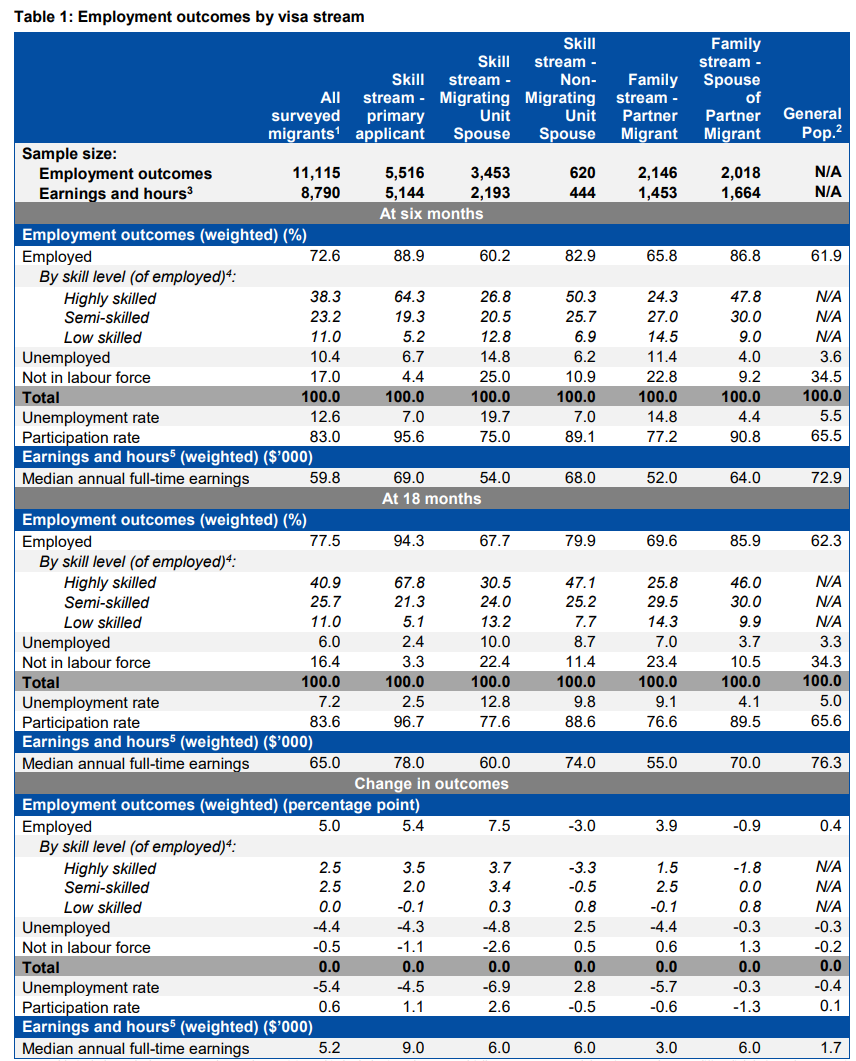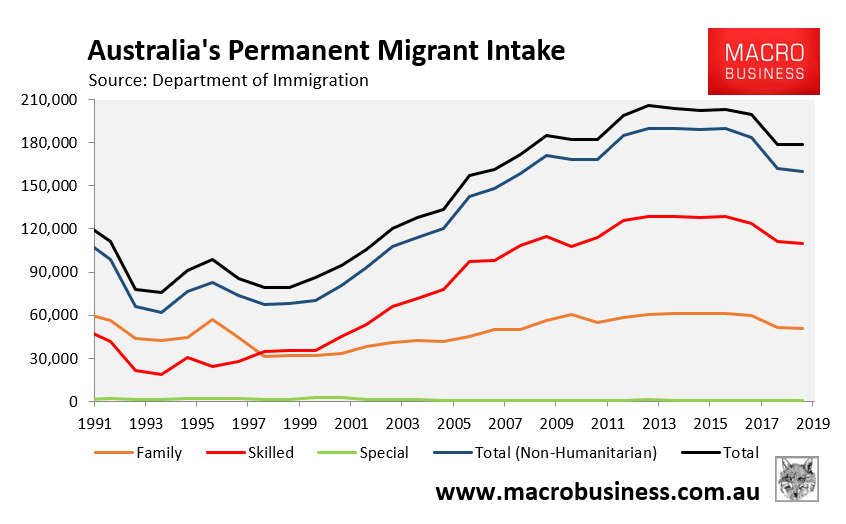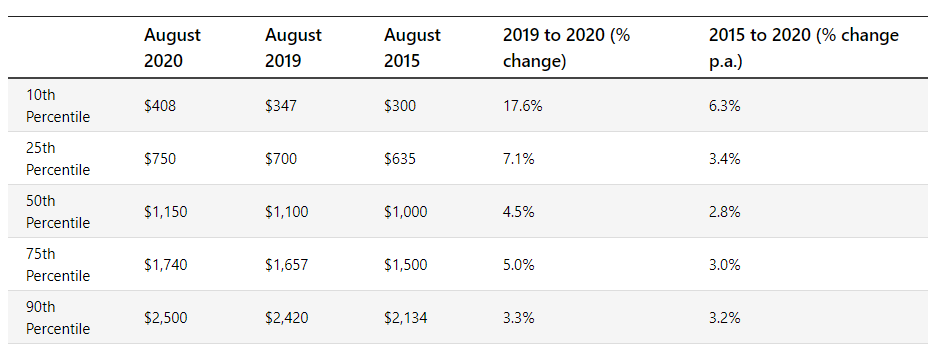The skilled stream is the largest component of Australia’s permanent migration program accounting for 61% (110,000) of Australia’s 179,000 permanent migrants (including the humanitarian intake) before COVID hit in 2019:
Empirical survey data from the Department of Home Affairs’ Continuous Survey of Australia’s Migrants shows that Australia’s permanent migration program is failing to attract highly paid and highly skilled migrants to Australia.
As show in the next summary table, recent permanent migrants experienced higher rates of unemployment and are paid less than the general population:

Permanent migrants are paid less than the general Australian population and experience higher rates of unemployment.
Of Particular note:
- Median annual full-time earnings of recent migrants at six months was $13,100 (18%) below the general population in 2018, and $11,300 (15%) below the general population at 18 months; and
- The unemployment rate of surveyed recent migrants was 12.6% at six months and 7.2% at 18 months, with both above the general population (5.0%) in 2018.
Even if we focus solely on the skilled stream, the labour market outcomes are disappointing, namely:
- The median annual full-time earnings of primary skilled migrants, which comprised 62% of the skilled sample, were paid $3,900 less than the general population at six months and only $1,700 more after 18 months.
- The median annual full-time earnings of their migrating spouses, which comprised 38% of the skilled sample, were paid $18,900 less than the general population at six months and $16,300 less after after 18 months.
These are alarming results given the general population includes unskilled workers, which necessarily drags the median full-time earnings figure down. Therefore, permanent skilled migrants should be paid far more than the population median, not less.
The temporary ‘skilled’ visa system is even worse. The Temporary Skilled Migration Income Threshold (TSMIT) has been set at the ridiculously low level of $53,900. This TSMIT was $5,900 (10%) below the median income of all Australians in August 2020 ($59,800), which includes unskilled workers (see table).
Setting such a low TSMIT explicitly incentivises Australian businesses to hire low cost foreign workers instead of local workers, as well as abrogates their need to provide training.
Two regulatory mechanisms have been put in place by the federal government to give the veil of integrity to the skilled visa system:
- Employers are supposed to advertise the role to Australians first before hiring a migrant (called labour market testing); and
- The government has developed a Skilled Occupation List of roles that are supposed to be experiencing shortages and permits the importation of ‘skilled’ migrants.
Neither of these functions work in practice and are easily gamed.
Labour market testing is easily overcome by offering a job at low pay rates relative to the skill-set so that no local will bother to apply. And when no local worker applies, businesses hire a migrant willing to work for below market salaries to obtain permanent residency.
The Skilled Occupation Lists are subject to industry lobbying and bare little resemblance to actual skills shortages in the market place.
An easy policy solution
The simplest solution to give integrity to Australia’s skilled visa system is to apply a pay floor equivalent to the 75th percentile of weekly earnings ($90,480 p.a. in 2020 – see above table) to both temporary and permanent skilled visa holders.
Doing so would ensure that Australian businesses can only hire foreign workers to fill highly skilled professions, while also eliminating the need for labour market testing or maintaining bogus Skilled Occupation Lists.
These simple reforms would maximise the economic benefits from skilled migration. Skilled local workers would no longer be undercut. Complexity of the visa system would be reduced. And lifting of the quality bar would reduce the overall level of immigration – both directly via having fewer skilled visa holders arrive and indirectly by making it harder for other temporary migrants (e.g. foreign students) to transition to a permanent skilled visa.
Labor should adopt these reforms as policy for the upcoming federal election.



